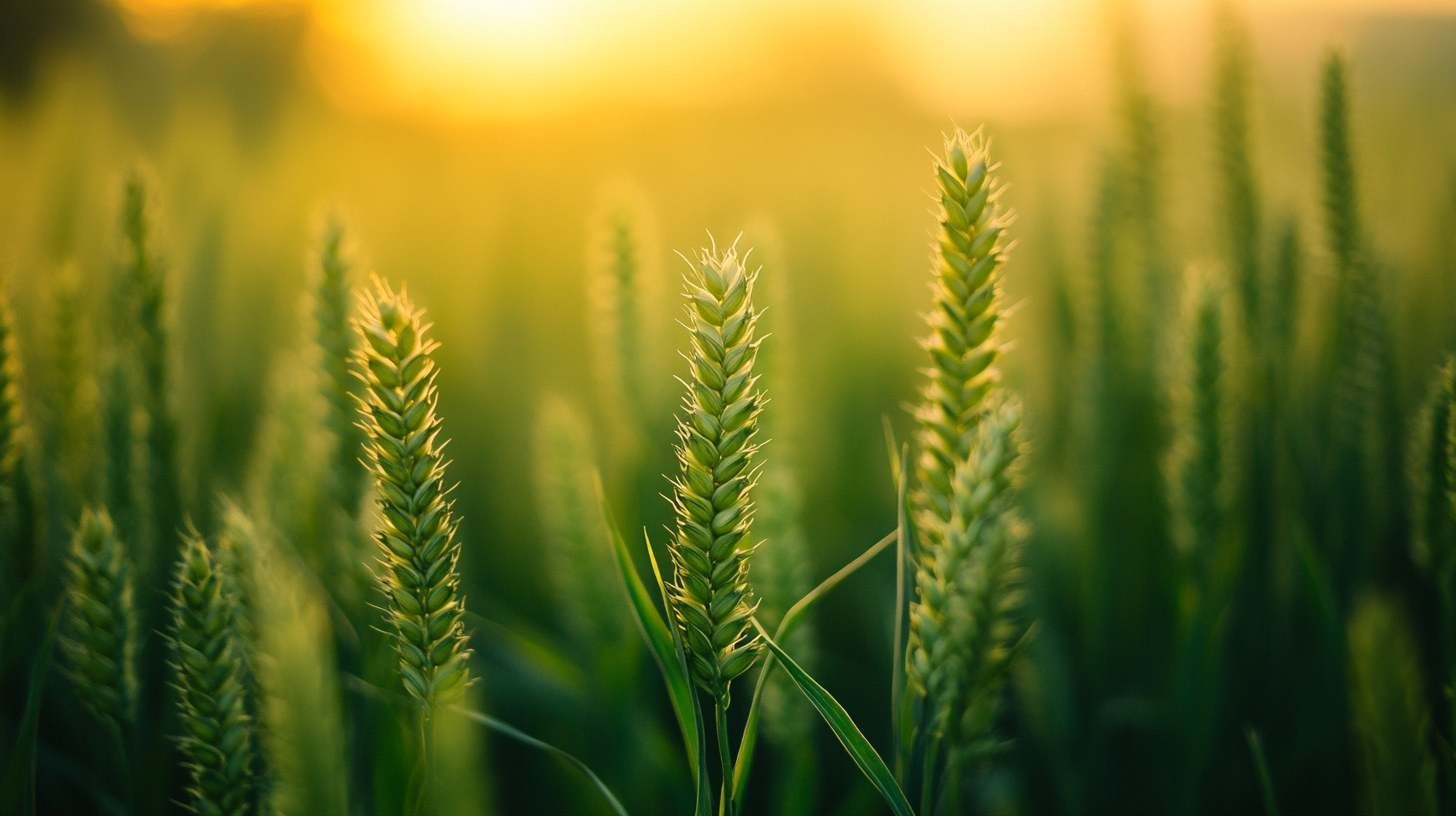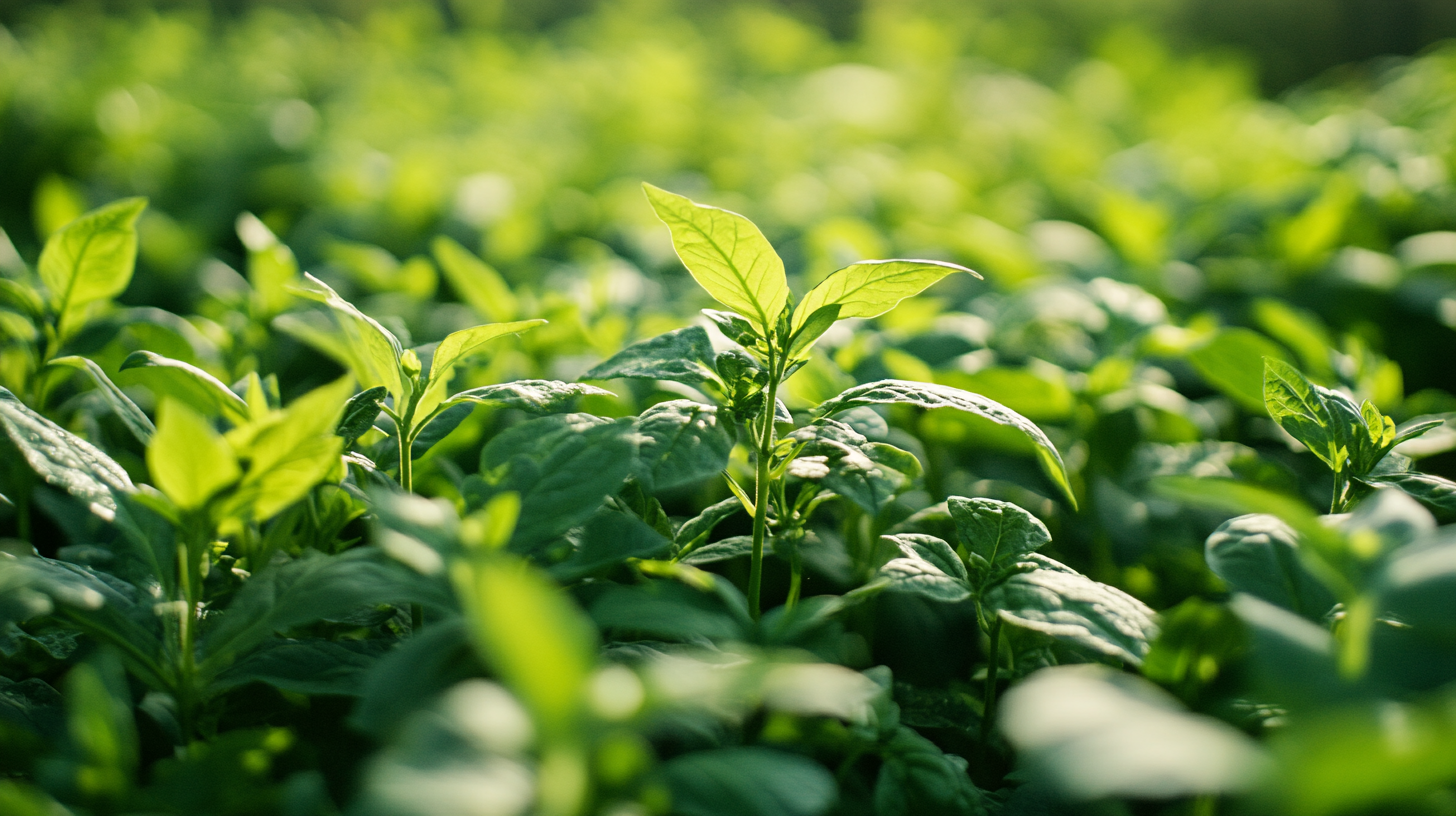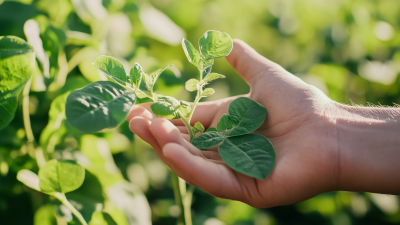 0551-68500918
0551-68500918 





You know, in today’s ever-changing agricultural scene, the Herbicides Market really plays a key role in keeping farming practices sustainable and boosting crop yields. With the global hunger for effective pest control solutions on the rise, it’s super important for buyers to dive deep into the range of products and innovations out there. That’s where Innovation Meiland (Hefei) Co., LTD. shines! They’re leading the charge in this transformation, focusing on developing fresh pesticide products, unique formulations, and advanced processes. Based in Hefei, China, Meiland Stock is all about bringing top-notch solutions to meet the varied needs of farmers around the globe. This blog is here to help global buyers get a solid grasp of the must-know info and current trends in the Herbicides Market. Our goal? To help you make informed choices and spark progress in agriculture that benefits both producers and consumers. Pretty exciting stuff, right?

You know, the global herbicides market is really going through some major changes lately. There are a bunch of reasons driving this shift, especially when it comes to both demand and supply. For starters, farmers are feeling the heat to boost agricultural productivity so we can keep up with the ever-growing food needs of the population. It’s pretty crucial for them to adopt advanced herbicides to handle weeds more effectively as they aim for those higher yields and better efficiency. Plus, there’s a lot of cool innovation happening with new formulations and herbicides that are specifically designed for different environmental conditions. This is really helping to protect crops and, in turn, bump up those agricultural yields.
But it’s not all smooth sailing. The market's got its fair share of challenges that might slow things down a bit. For instance, environmental concerns and the whole organic farming trend are pushing back against the usual herbicide use, nudging everyone towards more sustainable practices. And let’s not forget about the regulatory changes—those can seriously impact how available products are and how quickly new ones can come to market. On top of that, fluctuating raw material prices are adding to the uncertainty, which definitely makes life tougher for manufacturers. So as everyone involved figures out how to deal with these dynamics, it’s really important for them to focus on developing eco-friendly solutions while also keeping their production processes efficient. That’s how they’ll stay ahead in this changing herbicides landscape.

The herbicides market is really on the rise these days, especially in key areas. Why? Well, there's a growing need in agriculture and some cool new advancements in Crop Protection technologies. Take North America, for example. The market for 2,4-D herbicides is booming—like, it hit around USD 934.13 million in 2021, and forecasts suggest it could jump to about USD 1,527.10 million by 2029. That's quite a leap! It really shows how much farmers in the region are leaning on effective herbicides to boost their productivity.
But it’s not just North America that’s getting in on the action. Europe and the Asia-Pacific region are also making big contributions to the herbicide market, helping to drive global demand. As these countries shift more towards sustainable farming practices, we can expect to see an uptick in herbicide use. With a growing population, concerns about food security, and a real need for smart pest control, there's a lot of investment flowing into herbicides. All this points to an expected global market size of around USD 58.70 billion by 2033, with a solid CAGR of about 5.80%. This trend really underlines how vital herbicides will be in shaping the agricultural landscape around the world in the years to come.
You know, the global herbicides market is really going through some interesting changes these days. More and more, everyone involved is putting a spotlight on sustainability. A recent report from Research and Markets predicts that the market for eco-friendly herbicides is set to grow at a pretty impressive rate of 10% a year from 2022 to 2029. That’s a clear sign that we’re moving towards organic options! It’s not just regulations driving this shift; consumers are also demanding products that are kinder to our planet.
One of the big things happening now is the rise of biopesticides that come from natural sources. These are starting to make waves with buyers around the globe. The cool thing is, they not only tackle weeds effectively, but they also aim to reduce our environmental impact. According to a study by Mordor Intelligence, they expect that by 2025, biopesticides will make up over 18% of the entire herbicide market. That’s a pretty big deal and shows that sustainable choices are becoming much more popular, giving farmers some really viable, eco-friendly options.
Plus, there are exciting innovations happening with formulation technologies that are boosting how effective these sustainable herbicides can be. A survey from the International Crop Science Society recently found that about 65% of farmers are ready to put their money into organic herbicides because they’re less toxic and easier on the environment. As the agricultural scene keeps evolving, it’s clear that the role of sustainable herbicides is only going to grow, giving people the chance to make more eco-conscious choices.
| Category | Description | Market Trends | Sustainable Options | Organic Alternatives |
|---|---|---|---|---|
| Conventional Herbicides | Traditional chemical-based solutions for weed control. | Stable demand but increasing scrutiny on environmental impact. | Limited options; primarily synthetic. | Not typically considered organic. |
| Biopesticides | Natural pesticides derived from organisms or natural processes. | Growing preference in organic markets. | Highly sustainable and eco-friendly. | Widely accepted as effective organic alternatives. |
| Natural Herbicides | Herbicides made from natural ingredients. | Market growth driven by demand for sustainable practices. | Emphasis on plant-based solutions. | Increasingly popular as organic solutions. |
| Bioherbicides | Biological control agents used for weed suppression. | Rising investments in research and development. | Strongly aligned with sustainable agriculture. | Validated as effective organic alternatives. |
You know, the herbicides market is really going through some interesting changes lately, all thanks to cool tech innovations, especially in biopesticides and precision agriculture. So, biopesticides – they’re made from natural stuff, which is pretty awesome because they offer a more eco-friendly choice compared to those harsh synthetic chemicals. Not only do they focus on targeting specific pests, but they also help with soil health and reduce the chemical load on ecosystems. As more people become aware of how important it is to protect the environment, the demand for biopesticides is really picking up steam. Companies are pouring money into R&D to boost the effectiveness of these products, so they can keep up with the high standards of today’s agriculture.
Then there’s precision agriculture, which is truly a game changer for how herbicides are used. With all these fancy technologies like drones, GPS, and AI, farmers can now apply herbicides way more efficiently and selectively. This means less waste, lower costs, and a smaller environmental footprint since chemicals are only sprayed where they’re really needed. Plus, with real-time data analytics, they can keep a close eye on crop health and pest pressure, which helps them jump in with quick fixes that optimize yields while still being kind to the planet. When you put biopesticides and precision agriculture together, it’s like a smart strategy for anyone in the market trying to deal with the ever-evolving herbicides landscape.
You know, the herbicide market is really shaking things up these days! With a growing demand for smart weed management solutions, the big players are stepping up their game. Companies like Bayer, Corteva Agriscience, and Syngenta are pretty much at the forefront, thanks to their focus on innovation and some smart partnerships. They've invested a ton in research and development, which helps them roll out new herbicide formulas that suit the diverse needs of farmers all around the globe.
But it’s not just the giants grabbing all the spotlight. There are regional players, like Adama and Nufarm, who are really carving out their niche by zeroing in on local needs and sustainable practices. They’re customizing their products to tackle specific agricultural challenges in different areas, which is pretty clever and has helped them snag a nice chunk of the market.
So for buyers out there trying to navigate this tricky herbicide landscape, understanding these competitive dynamics and who’s who in the market is super important. It really helps ensure they make the right choices as everything keeps evolving at such a fast pace.

Hey there! So, it looks like the herbicides market is really gearing up for some serious growth as we head toward 2030. You know, with food demand skyrocketing globally and more people becoming aware of sustainable farming practices, this is exciting stuff! A recent report from ResearchAndMarkets even predicts that by the end of the decade, the global herbicides market could hit around $40 billion. That's an impressive compound annual growth rate (CAGR) of about 5.6%. It's mainly driven by our need for effective weed management solutions—especially with climate change and pest resistance throwing us some curveballs.
What’s super interesting is the wave of innovation in herbicide formulations. There’s been a buzz around bio-based herbicides, which are not only eco-friendly but are also aligning with the stricter regulations on traditional Chemical Herbicides. According to a study by Agrochemical Innovation, bioherbicides might snag a pretty hefty slice of the market, potentially over 15% by 2030. So, as buyers get ready to wade into this shifting scene, keeping an eye on these trends and opportunities for innovation is going to be pretty crucial for making smart purchasing choices.
: The growth of the herbicide market is driven by increasing agricultural demands and advancements in crop protection technologies.
The 2,4-D herbicides segment in North America was valued at USD 934.13 million in 2021 and is projected to rise to USD 1,527.10 million by 2029.
Factors contributing to the increased adoption include rising population, food security concerns, and the need for efficient pest control.
The projected global market size for herbicides is USD 58.70 billion by 2033, with a compound annual growth rate (CAGR) of 5.80%.
Biopesticides are derived from natural substances and offer a sustainable alternative to synthetic chemicals, gaining popularity as consumers become more aware of environmental impacts.
Precision agriculture utilizes advanced technologies such as drones, GPS, and AI to apply herbicides more efficiently and selectively, minimizing waste and reducing environmental impact.
Key players include Bayer, Corteva Agriscience, and Syngenta, which dominate the market through innovative products and strategic collaborations.
Regional players like Adama and Nufarm are focusing on localized solutions and sustainable practices to address specific regional agricultural challenges, capturing substantial market shares.
Understanding the competitive dynamics and market shares of key players is crucial for buyers to navigate herbicide procurement effectively in a rapidly evolving market.
Technological innovations, particularly in biopesticides and precision agriculture, are transforming the herbicide market by enhancing efficacy and promoting sustainable practices.





